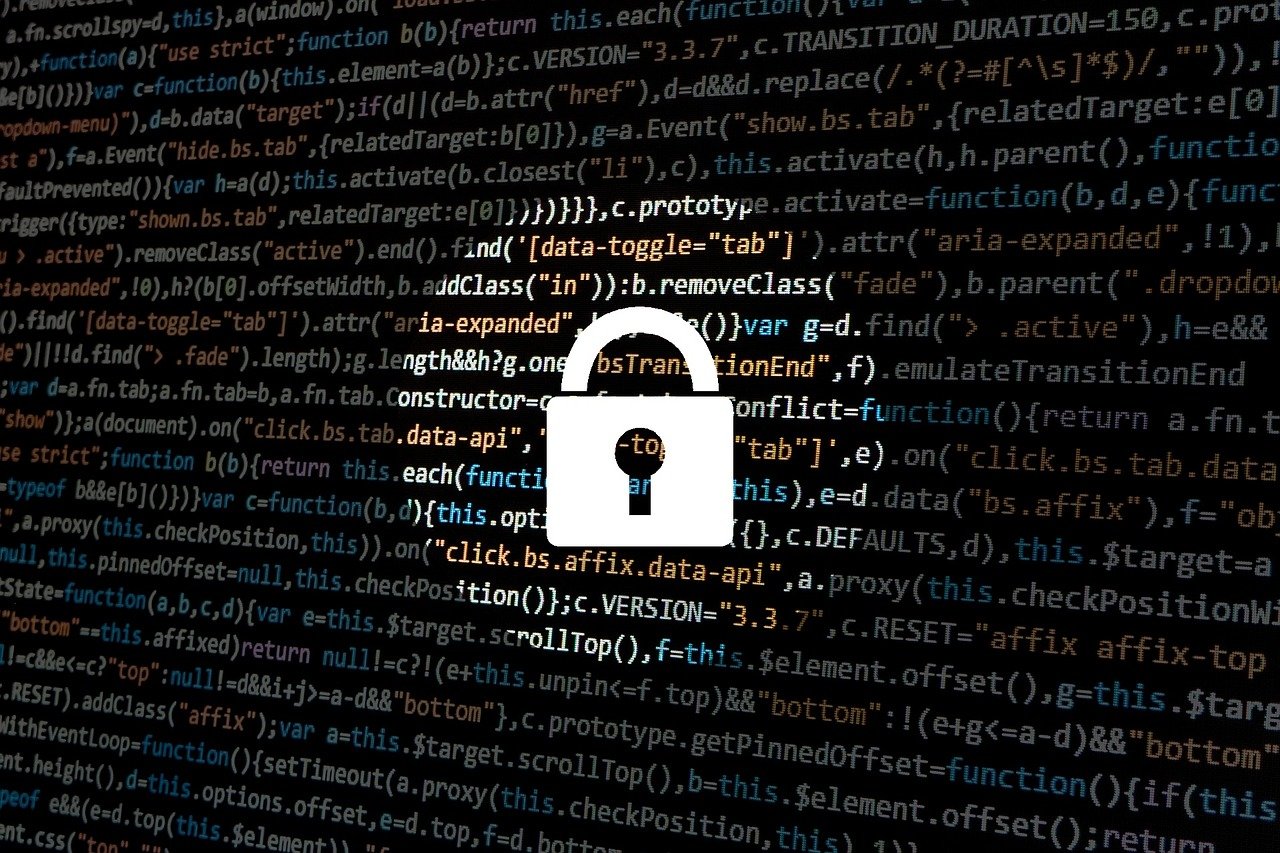Blog
Why Small Businesses Are Prime Targets for Cybercriminals [4 Effective Ways to Stay Secure]

Effective Ways to Secure Small Businesses from Cyber Criminals
Small companies have become main targets for cybercriminals in the linked digital terrain of today. Small businesses are more vulnerable despite the belief that only big companies deal with major cyber threats because of their low resources and usually poor cybersecurity policies. Protecting your company depends on knowing the causes of this targeting and applying sensible security plans.
Why Are Small Businesses Targeted by Cybercriminals?
Restricted Cybersecurity Resources:
Many small companies run on limited resources and usually allocate little for cybersecurity. Attackers find obsolete systems and inadequate preventive mechanisms resulting from this lack of investment appealing targets. Actually, 47% of companies with less than 50 employees have no cybersecurity budget.
Valuable Data:
Small companies manage sensitive data including customer information, financial records, and intellectual property despite the size of their operations. Recognizing the importance of this information, which may be sold on the dark web or used for illegal activity, cybercriminals act.
Supply Chain Vulnerabilities:
Many times acting as suppliers or partners, small businesses work with bigger companies. Supply chain attacks—a strategy used by cybercriminals—may take advantage of small organizations’ less robust security to access bigger networks. According to a recent analysis, one employee clicking on a dangerous link gave attackers access to private student data, therefore compromising the system of a private school.
Underestimation of Risk:
Many small business owners undervalue their chances of being targeted, which results in complacency in putting strong cybersecurity policies into use. Of small business owners, shockingly, 36% are “not at all concerned” about cyberattacks.
How Small Businesses Can Defend Themselves?

Significant financial outlays are not always necessary to implement good cybersecurity. Small firms can defend themselves against cyber attacks by using smart measures.
- Educate Your Team: Your employees are your first line of protection against cyberattacks. Inform staff members on typical online dangers, such as malware, phishing, and social engineering frauds. Frequent training sessions can aid in the prevention of security breaches that result from human mistake.
- Make Use of Multifactor Authentication and Strong Passwords: Make sure that multifactor authentication (MFA) and strong passwords are on all platforms. By requiring two or more authentication methods to access systems, MFA adds an extra layer of protection and drastically lowers the likelihood of unwanted access.
- Maintain System Updates: Older software has weaknesses that hackers commonly take advantage of. Closing security gaps requires routinely applying the most recent security patches to hardware, software, and operating systems.
- Put Basic Cybersecurity Measures in Place: Install basic cybersecurity technologies such as antivirus software, firewalls, and anti-malware applications. These can act as the first line of defense against a lot of typical cyberthreats.
- Protect Your Wireless Networks: Make sure the Wi-Fi network in your company is hidden, safe, and encrypted. To secure internet traffic, use a virtual private network (VPN), and think about creating a different network just for visitors.
- Frequently Backup Data: Keep regular backups of all important data, and store them safely in the cloud or off-site. Backups will guarantee that your company can continue to function with the least amount of disruption in the case of data loss due to a hardware malfunction, natural disaster, or cybercrime.
- Create an Incident reaction Plan: Have a reaction plan in place to be ready for any cyber incidents. This should include instructions on how to find security breaches, handle them, and recover from them. During and after an event, it is critical to know who to contact, how to contain the breach, and how to communicate with stakeholders.
Additional Cybersecurity Best Practices for Small Businesses
Those four key strategies are a solid start for keeping small businesses safe from hackers, but there are more cyber safety measures that can really boost online security.
Use Multi-Factor Authentication (MFA) for every account
Just using passwords isn’t cutting it anymore when it comes to keeping business systems secure. Cybercriminals often go after businesses by taking advantage of weak or reused passwords to get in. Using MFA for all business applications adds an extra layer of security by asking users to confirm their identity through
- A one-time code sent via SMS or email
- Authentication apps like Google Authenticator or Microsoft Authenticator
- Biometric authentication (fingerprint or facial recognition)
A Microsoft study found that MFA stops 99.9% of automated cyberattacks.
Do you knwo A/B testing? Continue reading if you want a detailed insight on A/B testing.
Regularly Update and Patch All Systems
Hackers often take advantage of old software vulnerabilities to carry out cyberattacks. Did you know that a study by the Ponemon Institute found that 60% of data breaches happen because of unpatched vulnerabilities? To keep cyber attacks at bay, you need to:
- Turning on automatic software updates for all business applications
- It’s important to keep your operating systems, plugins, and antivirus programs updated regularly.
- Keeping an eye on security patches released by vendors and applying them right away.
Secure Wi-Fi Networks and Implement Network Segmentation
A lot of small businesses are using unprotected Wi-Fi networks, which puts them at risk for cyber threats. There are a few ways businesses can boost their online security:
- It’s a good idea to use WPA3 encryption for your Wi-Fi instead of sticking with those old protocols like WEP or WPA. Also, hiding your SSID can help keep unauthorized users from accessing your network.
- Separating guest Wi-Fi from internal business networks is a smart move to help reduce exposure to potential threats.
Embrace Zero Trust Architecture
The Zero Trust model is all about the idea of “never trust, always verify.” This method involves checking every person and device that wants to access resources on a private network, no matter if they’re inside or outside the network’s boundaries.
Micro-Segmentation:
Break your network into smaller parts, and give each one its own access controls. This containment strategy makes sure that if one part gets compromised, the breach won’t easily spread to other areas of the network.
Least Privilege Access:
Assign users only the permissions necessary to perform their specific tasks. It’s a good idea to regularly check and tweak access rights to reduce the chances of attackers getting in.
If you go for a Zero Trust Architecture, you’ll really boost your network’s defense against unauthorized access and lower the chances of both internal and external threats.
Back Up Critical Data and Implement Disaster Recovery Plans
Protecting data for small businesses is super important, especially when it comes to dealing with ransomware attacks. These attacks can really lock businesses out of their own files and leave them facing a ransom demand. Here’s how to avoid losing your data:
- Set up automatic daily backups to keep your data safe in cloud storage or on external servers.
- Make sure to stick to the 3-2-1 backup rule: keep three copies of your data, use two different formats, and have one of those copies stored offsite.
- It’s a good idea to regularly test your disaster recovery plans so you can quickly bounce back if an attack happens.
Read more on How to set up a virtual assistant for your business.
Small Business Cybersecurity Checklist

Here’s a Cybersecurity Checklist for Small Businesses for easy implementation.
Security Measure | Action Steps |
Advanced Threat Detection | Deploy XDR and SIEM tools for real-time monitoring |
Zero Trust Security Model | Enforce least privilege access and use micro-segmentation |
Employee Cybersecurity Training | Conduct simulated phishing tests and interactive workshops |
AI-Powered Threat Detection | Use behavioral analytics and predictive threat modeling |
Multi-Factor Authentication (MFA) | Require MFA for all logins (email, banking, cloud storage, etc.) |
Regular Updates & Patches | Enable automatic software updates and apply security patches promptly |
Secure Wi-Fi & Business Devices | Use WPA3 encryption, hide SSIDs, and implement network segmentation |
Data Backup & Disaster Recovery | Follow the 3-2-1 backup rule and regularly test recovery plans |
Regular Cybersecurity Audits | Conduct penetration testing and work with an MSP for 24/7 monitoring |
Incident Response Plan | Define step-by-step actions and assign incident response roles |
Best Tools to Enhance Cybersecurity for Small Businesses
To effectively minimize cyber threats to small businesses, various tools and platforms can be used to automate security processes, detect threats, and improve business cyber safety measures. Here are some of the best tools for different cybersecurity needs:
|
Advanced Threat Detection | 🔹 CrowdStrike Falcon | AI-driven XDR & SIEM solutions for real-time monitoring and response |
Zero Trust Security Model | 🔹 Okta | Identity verification, least privilege access, and micro-segmentation |
Employee Cybersecurity Training | 🔹 KnowBe4 | Simulated phishing tests and interactive training modules |
AI-Powered Threat Detection | 🔹 Darktrace | Behavioral analytics and predictive threat modeling for anomaly detection |
Multi-Factor Authentication (MFA) | 🔹 Google Authenticator | Two-step authentication to prevent unauthorized access |
Regular Updates & Patching | 🔹 Automox | Automates security updates and vulnerability patching |
Secure Wi-Fi & Business Devices | 🔹 Ubiquiti UniFi Security Gateway | Encrypted firewalls, VPNs, and network segmentation |
Data Backup & Disaster Recovery | 🔹 Acronis Cyber Protect | Secure cloud backups with automated recovery testing |
Regular Cybersecurity Audits | 🔹 Qualys Vulnerability Management | Automated penetration testing and risk assessment |
Incident Response Planning | 🔹 Splunk Security Cloud | Automates incident response workflows and mitigation steps |
Final Thoughts
Cyber threats to small businesses are popping up more often and getting trickier, so it’s really important for small business owners to take some proactive steps to secure their digital assets. If small businesses want to lower their chances of cyberattacks, they should consider using some smart cybersecurity practices. This includes things like Zero Trust security models, AI-driven threat detection, running phishing simulations for employees, and having solid data protection strategies in place.
These days, investing in cybersecurity isn’t just a nice-to-have; it’s essential for keeping your business alive in the long run. A data breach can really hit hard, but if small businesses stay informed and ready, they can create solid defenses against cybercriminals. This way, they can keep growing in a safe digital space.
Share
15 Minutes Free Discovery Call
How Zrafted Can Help Businesses?
- Contact Centre Solutions
- Managed IT Services
- Digital Marketing
- Business Process Outsourcing
- Virtual Assistance
- E-Commerce
